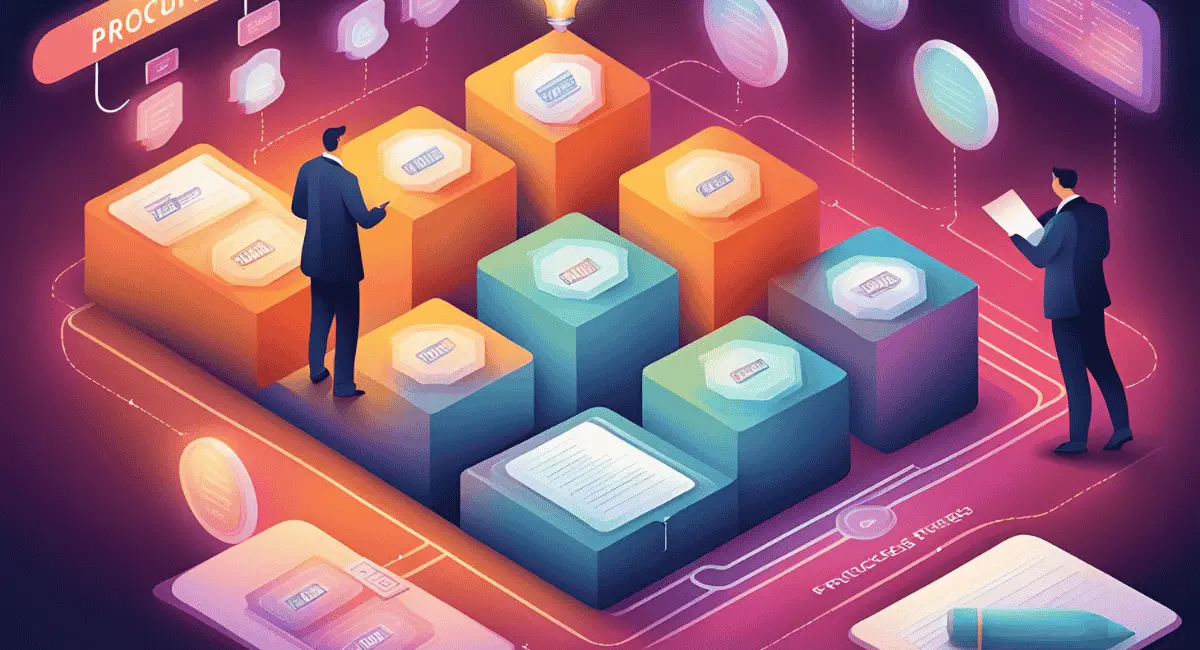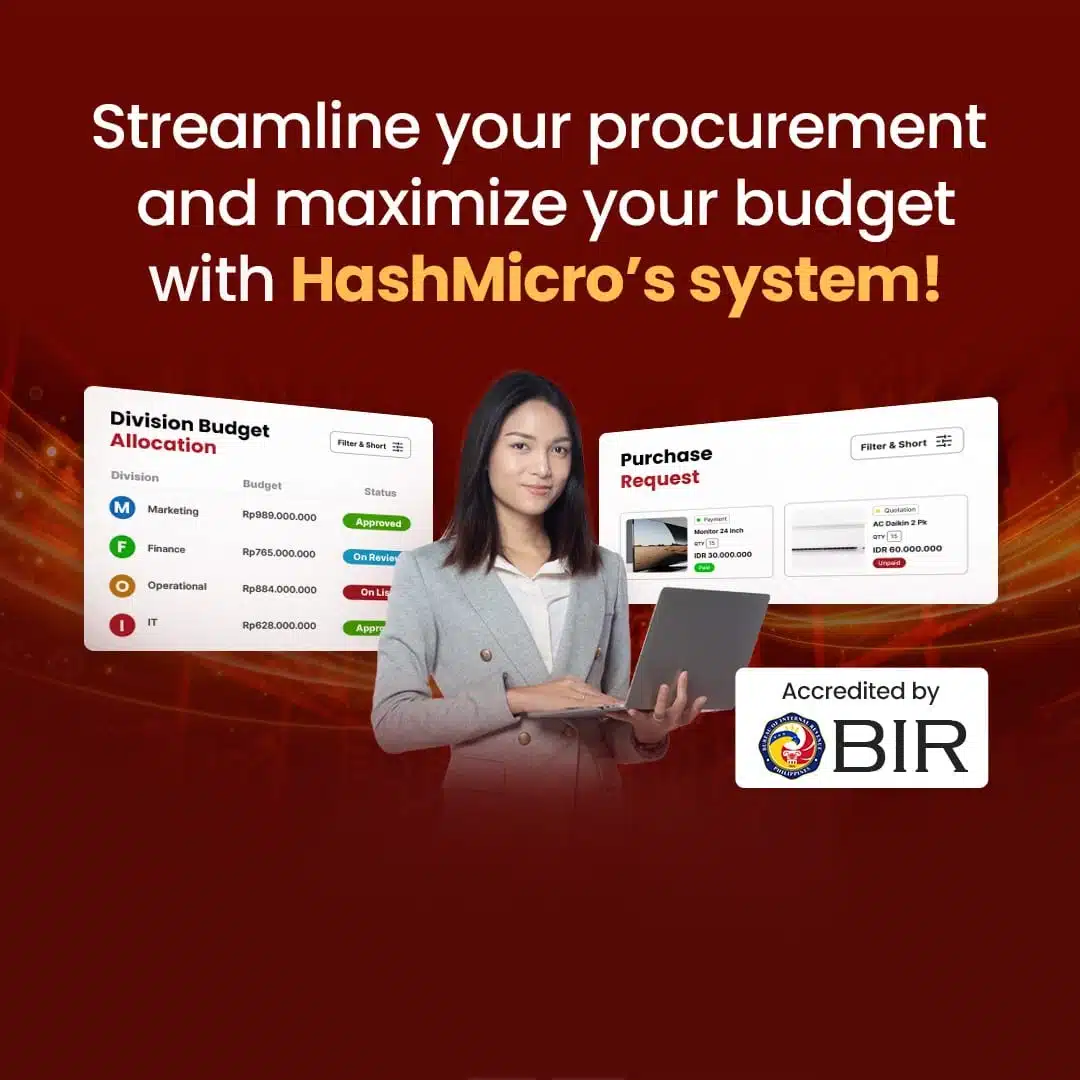Struggling with inefficient purchases and unreliable suppliers? Without the right procurement process steps, your business could be losing money and quality control without even realizing it.
The procurement process steps aren’t just about placing orders—they’re a strategic roadmap for sourcing reliable suppliers, optimizing costs, and ensuring smooth operations. Understanding these steps can make the difference between unnecessary expenses, whether it’s raw materials, services, or equipment.
Want to learn how the right procurement process steps can transform your business? Don’t let your competitors stay ahead while you overspend. Keep reading now to gain the edge your business deserves!
Key Takeaways
|
Table of Content
Content Lists
7 Steps in the Procurement Process

There’s no universal approach to procurement, and the steps vary depending on business needs and objectives. Below are seven key procurement process steps tailored for Filipino businesses:
1. Identify the needs across business units
The first step is figuring out exactly what your business needs. Start by gathering input from different departments and teams. This step helps you understand the overall requirements and identify overlaps.
By consolidating these needs, you can avoid unnecessary purchases and take advantage of spending analysis to find savings opportunities. Plus, having a clear list of needs makes it easier to prioritize and plan ahead.
2. Research and evaluate suppliers
Once you know what you need, it’s time to start looking for suppliers. This can range from quick online searches to more formal approaches like issuing RFPs (Requests for Proposals), RFQs (Requests for Quotes), or RFIs (Requests for Information).
The goal here is to find suppliers who offer the best combination of price, quality, and reliability. Don’t rush this process—taking the time to evaluate your options can save you a lot of trouble down the line.
3. Select a supplier and negotiate terms
After narrowing down your supplier options, choose the one that fits your needs best and start negotiations. This is where you finalize important details like pricing, delivery timelines, payment terms, and contract obligations.
Negotiating effectively ensures that both sides are clear on expectations and sets the foundation for a strong supplier relationship.

4. Issue purchase requisition and release purchase order
With the supplier selected, create a purchase requisition (PR) that outlines all the specifics—what’s being bought, the cost, quantity, and supplier details.
After the requisition is approved, it’s time to issue a purchase order (PO), which acts as the official agreement between you and the supplier. This step formalizes the transaction and keeps everything on track.
5. Process payment upon receiving an invoice
When the supplier sends an invoice, check it carefully against the purchase order to make sure everything matches—costs, quantities, and terms.
Depending on what you agreed upon, payment might be made upfront or after delivery. This step ensures financial clarity and avoids unnecessary disputes.
6. Inspect and audit delivered goods/services
After the supplier delivers the goods or services, take the time to inspect them. Make sure they meet the agreed-upon quality standards and match the terms of your contract.
This might involve a quick visual check or a more detailed audit. Catching issues early prevents bigger problems later and ensures you’re getting what you paid for.
7. Maintain accurate records
Finally, keep detailed records of everything—purchase orders, invoices, delivery receipts, and contracts. Organized records make it easy to track spending, monitor supplier performance, and prepare for audits.
Using digital tools for record-keeping can save time and reduce errors, giving you peace of mind and better control over your procurement process.
How to Enhance the Procurement Process Using Software
Managing procurement manually can be overwhelming. Chasing quotes, tracking spending, and handling suppliers all take up valuable time and leave room for errors. e-Procurement system software changes the game by automating these repetitive tasks.
But automation is just the start. Modern tools like HashMicro’s Procurement Software offer detailed analytics to help you make smarter decisions. You’ll gain insights into supplier performance, spending patterns, and potential cost-saving opportunities.
For instance, you can identify reliable vendors and weed out those costing you more in delays or subpar quality—all with the help of clear, data-driven insights.
Procurement management system also improves control over your purchasing process. Centralizing supplier information and enforcing contract terms ensures compliance while reducing risks like late deliveries or missed deadlines.
The reality is sticking to manual processes leaves your business exposed to inefficiencies and rising costs. With HashMicro’s Procurement Software, you can transform procurement into a cost-efficient, strategic advantage.
Selecting the Right Procurement Solution for Your Business
Choosing the right procurement software is a crucial step in optimizing your procurement process and achieving business efficiency. To make the best choice, keep these important factors in mind:
- Quick Implementation: Pick software that’s user-friendly and easy to adopt. Fast implementation minimizes disruptions and keeps operations smooth.
- Reliable Customer Support: Ensure the provider offers responsive support like live chat or 24/7 help. Good support prevents delays when issues occur.
- Features and Customization: List must-have features like analytics or supplier management. Check customization options and costs to match your needs.
- Scalability: Choose software that can grow with your business. Scalable solutions ensure long-term usability as your needs expand.
- Integration Capabilities: Ensure the software integrates seamlessly with your existing tools. Good integration reduces manual work and enhances efficiency.
Investing in the right procurement solution not only streamlines your process but also strengthens vendor relationships, improves cost management, and boosts overall operational efficiency. A well-chosen tool sets the foundation for smarter procurement that can drive your business forward.
Conclusion
An efficient procurement process is crucial for any business aiming to cut costs while enhancing overall efficiency. By progressing from identifying needs to managing suppliers, following the right procurement process steps ensures your operations remain streamlined and cost-effective.
Furthermore, incorporating procurement software, like HashMicro’s, elevates this process to a whole new level by introducing automation and real-time insights. With HashMicro’s Procurement Software, you simplify complex workflows and gain access to advanced analytics, helping you optimize spending and improve vendor performance.
Moreover, it’s a comprehensive solution designed to enhance compliance, reduce manual tasks, and drive profitability with ease. So, why wait to transform your procurement process? Schedule your free demo today and see the impact firsthand!

FAQ Around Procurement Process Steps
-
What is the basic procurement process?
The basic procurement process typically involves identifying needs, followed by sourcing and evaluating suppliers. Next, it transitions to negotiating terms, issuing purchase orders, receiving goods, processing payments, and finally, maintaining detailed records for accountability.
-
What is a good procurement process?
A good procurement process not only ensures cost-effectiveness but also emphasizes efficiency and compliance. Furthermore, it incorporates clear steps, fosters strong supplier relationships, and seamlessly integrates automation tools to reduce risks and improve outcomes.
-
What is RFQ in procurement?
RFQ, or Request for Quotation, is a critical document businesses use to request detailed pricing from suppliers. Additionally, it allows companies to compare costs, evaluate terms, and ultimately select the best vendor for specific requirements.




































